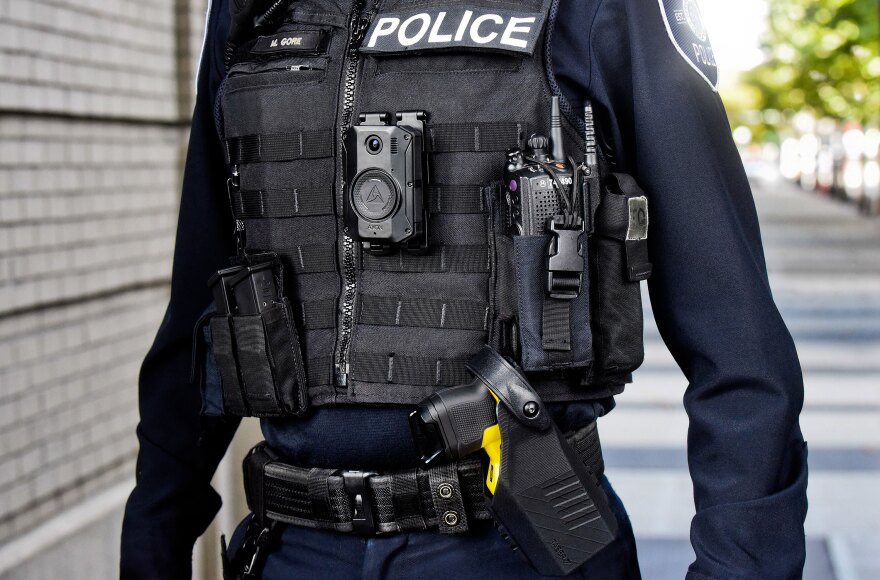Officers in Cincinnati Police District 3 have already been trying out new body-worn cameras from Axon Enterprise, Inc. The department Tuesday announced it is getting more than 1,000 Axon Body 3 next generation cameras. Axon says Cincinnati is the first major city agency to use the cameras.
Police Chief Eliot Isaac explains one of the highlights of the new cameras. "What it will do is anytime an officer draws his firearm that will automatically activate his or her body-worn camera and the mobile video recorder in the vehicle. If they draw their Taser and activate their Taser it will also activate that camera.
"When we have an officer-involved shooting or some other critical incident, one of the first things that we're asked by the media is 'Is there camera footage; is there body-worn camera footage?' This will give us the latest technology to ensure that anytime an officer is involved in that type of action that footage will be there for us."
The cameras are part of a 10-year contract extension with Axon that bundles all of the department's body cameras (BWC), in-car mobile video recorders (MVR), Tasers, and related hardware and software programs under one contract. As part of that $26 million deal, the department has access to three subsequent equipment upgrades to newer BWCs, MVRs and Tasers as technology changes over the next 10 years, according to a police department specialist.
Part of the new technology includes a consolidated record keeping system designed to streamline the process for uploading and storing video from body and vehicle cameras as well as citizen-provided footage. It will also help with redactions and streamline and speed up the public records request system.
Footage from police dashcams will now upload wirelessly on secured district WiFi networks rather than needing to be manually downloaded regularly from hard drives in cars.
The new cameras will be rolled out to officers through the end of the year. The new systems require new docking stations, etc. to capture the data and store it in the cloud. That's all included in the consolidated contract. The department says the data will be transmitted via secure WiFi networks.
The new cameras weigh a little bit more than the current cameras but are slightly smaller, according to a department official who worked on the contract. They are also designed to work better in low-light situations and reduce wind noise and motion blur. The cameras are being phased in and should be on all officers by the end of the year.



